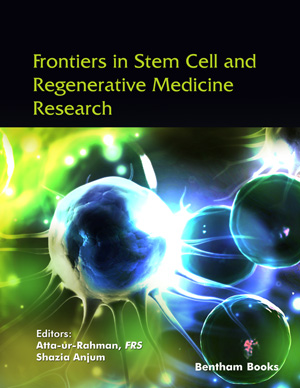Abstract
Background: The unique potential of stem cells to restore vision and regenerate damaged ocular cells has led to the increased attraction of researchers and ophthalmologists to ocular regenerative medicine in recent decades. In addition, advantages such as easy access to ocular tissues, non-invasive follow-up, and ocular immunologic privilege have enhanced the desire to develop ocular regenerative medicine.
Objective: This study aimed to characterize central and nasal orbital adipose stem cells (OASCs) and their neural differentiation potential.
Methods: The central and nasal orbital adipose tissues extracted during an upper blepharoplasty surgery were explant-cultured in Dulbecco’s Modified Eagle Medium (DMEM)/F12 supplemented with 10% fetal bovine serum (FBS). Cells from passage 3 were characterized morphologically by osteogenic and adipogenic differentiation potential and by flow cytometry for expression of mesenchymal (CD73, CD90, and CD105) and hematopoietic (CD34 and CD45) markers. The potential of OASCs for the expression of NGF, PI3K, and MAPK and to induce neurogenesis was assessed by real-time PCR.
Results: OASCs were spindle-shaped and positive for adipogenic and osteogenic induction. They were also positive for mesenchymal and negative for hematopoietic markers. They were positive for NGF expression in the absence of any significant alteration in the expression of PI3K and MAPK genes. Nasal OASCs had higher expression of CD90, higher potential for adipogenesis, a higher level of NGF expression under serum-free supplementation, and more potential for neuron-like morphology.
Conclusion: We suggested the explant method of culture as an easy and suitable method for the expansion of OASCs. Our findings denote mesenchymal properties of both central and nasal OASCs, while mesenchymal and neural characteristics were expressed stronger in nasal OASCs when compared to central ones. These findings can be added to the literature when cell transplantation is targeted in the treatment of neuro-retinal degenerative disorders.
Graphical Abstract
[http://dx.doi.org/10.4252/wjsc.v13.i5.366] [PMID: 34136071]
[http://dx.doi.org/10.1002/sctm.21-0239] [PMID: 34515419]
[http://dx.doi.org/10.3390/biotech12020048] [PMID: 37366796]
[http://dx.doi.org/10.1146/annurev-chembioeng-061010-114257] [PMID: 22432625]
[http://dx.doi.org/10.1038/modpathol.2011.165] [PMID: 22056951]
[http://dx.doi.org/10.3390/cells8080784] [PMID: 31357692]
[http://dx.doi.org/10.1155/2012/461718]
[http://dx.doi.org/10.1089/hum.2010.115] [PMID: 20565251]
[http://dx.doi.org/10.1182/blood-2003-05-1670] [PMID: 14576065]
[http://dx.doi.org/10.1634/stemcells.2004-0013] [PMID: 15579650]
[http://dx.doi.org/10.3892/ijmm.2015.2413] [PMID: 26719857]
[http://dx.doi.org/10.1007/978-1-4939-1435-7_13]
[http://dx.doi.org/10.3390/jcm9072161] [PMID: 32650555]
[http://dx.doi.org/10.1097/IOP.0b013e3181912292] [PMID: 19273919]
[http://dx.doi.org/10.1242/dev.002642] [PMID: 17507398]
[http://dx.doi.org/10.1016/0014-4835(79)90164-7] [PMID: 510425]
[http://dx.doi.org/10.1007/s00441-019-03072-0] [PMID: 31377878]
[http://dx.doi.org/10.1385/1-59259-207-4:255]
[http://dx.doi.org/10.1007/978-1-0716-1437-2_1]
[http://dx.doi.org/10.1186/s13287-020-01855-9] [PMID: 32771052]
[http://dx.doi.org/10.2217/rme.12.77] [PMID: 23210809]
[http://dx.doi.org/10.3390/biomedicines9080873] [PMID: 34440077]
[http://dx.doi.org/10.1186/scrt445] [PMID: 25158127]
[http://dx.doi.org/10.1042/BC20080011] [PMID: 18793119]
[http://dx.doi.org/10.1167/iovs.14-14441] [PMID: 24994870]
[http://dx.doi.org/10.1002/term.1569] [PMID: 22837175]
[http://dx.doi.org/10.15283/ijsc.2014.7.2.118] [PMID: 25473449]
[http://dx.doi.org/10.1186/s13287-016-0359-3] [PMID: 27465541]
[http://dx.doi.org/10.1096/fj.05-5460rev] [PMID: 16770003]
[PMID: 1674734]
[http://dx.doi.org/10.1042/bst0200401] [PMID: 1356856]
[http://dx.doi.org/10.1083/jcb.140.3.685] [PMID: 9456327]
[http://dx.doi.org/10.1016/S0960-9822(06)00300-9] [PMID: 9285719]
[http://dx.doi.org/10.1038/sj.onc.1208812] [PMID: 16007174]
[http://dx.doi.org/10.1016/S0165-4608(03)00234-6] [PMID: 15104276]
[http://dx.doi.org/10.1016/j.yexcr.2004.01.026] [PMID: 15093746]
[http://dx.doi.org/10.1016/S0002-9440(10)63330-5] [PMID: 15277239]
[http://dx.doi.org/10.1016/S0002-9440(10)62982-3] [PMID: 16049324]
[http://dx.doi.org/10.1165/ajrcmb/1.1.65] [PMID: 2576218]
[http://dx.doi.org/10.1146/annurev.neuro.24.1.1217] [PMID: 11520933]
[http://dx.doi.org/10.1080/02713683.2022.2055084] [PMID: 35499266]
[http://dx.doi.org/10.1159/000514441] [PMID: 33454713]










